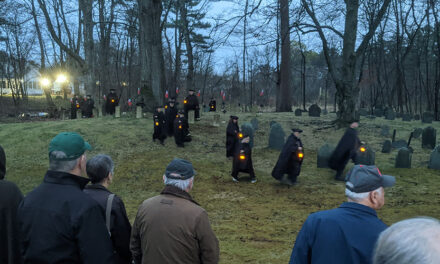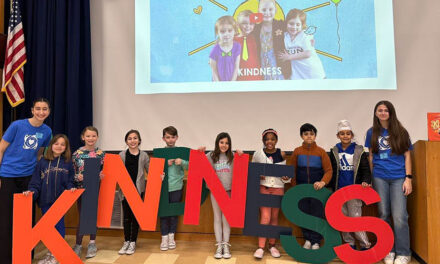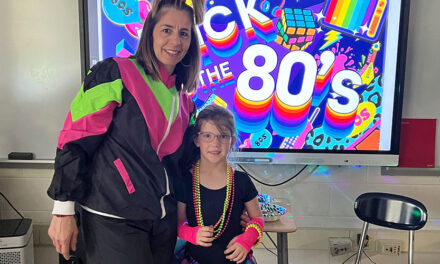Published August 21, 2019
By DAN TOMASELLO
LYNNFIELD — The town has partnered with a helpline designed to assist people who need mental health services.
Margaret Hannah, the executive director at William James College’s Freedman Center for Child and Family Development, announced that Lynnfield has agreed to begin utilizing the college’s INTERFACE program during A Healthy Lynnfield’s monthly meeting on Aug. 12. She said the helpline is a referral service that “works to increase awareness of mental health issues impacting children, families and adults” by ensuring they receive the appropriate services.
“INTERFACE is a program of William James College and works in collaboration with the Massachusetts Child Psychiatry Access Project (MCPAP), the Massachusetts Department of Mental Health and the Massachusetts Department of Public Health Suicide Prevention Program,” said Hannah.
Substance Abuse Prevention Coordinator Peg Sallade noted anxiety and mental health issues often lead to substance abuse.
“One study that looked at a 14-year period showed adolescents are twice as likely to have issues with substance use if they are experiencing anxiety and other mental health concerns,” said Sallade. “That is significant. That is why we just cannot focus on substance use prevention.”
Hannah said INTERFACE is a “mental health resource and referral helpline” that residents can utilize to help children, adults and families find the appropriate and necessary resources. She noted area communities Melrose, Reading and Wakefield are currently offering the helpline to residents.
“We are in 55 communities in the commonwealth,” said Hannah.
There are five steps involved with INTERFACE’s referral service, which begins with the intake step. After someone calls the helpline, Hannah said a referral counselor will ask the caller to complete a “confidential intake.”
“Callers will be asked for some basic contact information, information about themselves or their child, insurance information, availability to meet with someone, and general information about what they are concerned about,” said Hannah. “The length of time it takes to complete the intake varies, but it should take about 15 to 20 minutes.”
After the intake step is completed, Hannah said the referral counselor will assign a caller a case number. She said case numbers are designed to protect a caller’s confidentiality as well as help them find a “match” for mental health services.
“INTERFACE counselors begin a search for a match by utilizing a tailored search process in the database as well as other resources to find the service requested,” said Hannah. “Callers can expect that their resource and referral counselor will be in touch with them in the first few business days after they call.”
Hannah said counselors will work to find the right match for a caller.
“Once a match has been identified, an INTERFACE counselor will call you and email you the information including the provider’s name, credentials, location and phone number,” said Hannah. “The INTERFACE counselor may also provide links to guides on our website that may be helpful including information about how to choose a mental health provider. The INTERFACE Referral Hotline is committed to making a match within two weeks of receiving the intake and counselors usually provide two to three matches.”
After a caller has been given matches to mental health providers, Hannah said INTERFACE counselors will follow up with callers to see if they have been able to connect with the providers as well as see how its going.
“The INTERFACE Referral Helpline is committed to honoring a caller’s voice and choice, and will follow up with them until they feel they have found a successful match,” said Hannah. “The number of times a caller will receive a follow up may vary depending on how quickly a match is made.”
After a caller has found a “successful match,” Hannah said counselors will close out the referral process.
“However, if someone needs additional support in the future for other referrals or if the match does not work out for some reason, people can call the helpline again,” said Hannah.
Hannah said the INTERFACE Referral Service’s number is 1-888-244-6843. She said the helpline is open 9 a.m.-5 p.m. Monday through Friday. In the event of an emergency, Hannah said residents need to call 911.
Q&A
After Hannah concluded giving an overview of INTERFACE, she answered questions from A Healthy Lynnfield coalition members.
Lahey Health Community Relations Director Christine Healey inquired how a family would get in touch with INTERFACE on weekends.
“We are helpline, not a hotline,” said Hannah. “That is the difference. A helpline is there for someone who is ready to go over the wall. But in the event of an emergency, we urge people to call emergency service providers or 911.”
Sallade noted Eliot Community Services provides mental health support to residents.
“It’s important that people know there is a mental health crisis service,” said Sallade. “When in doubt, call 911 and our wonderful first responders will respond to any emergency in the community.”
In response to a question from Sallade, Hannah said INTERFACE can help veterans find mental health resources.
After the question and answer session concluded, Sallade showed the meeting’s attendees an informational video about INTERFACE that was created by Lynnfield Media Studios Executive Director Eric Hamlin and cameraman Drew Sanborn. The video featured local officials discussing the helpline’s benefits.
“This is a community-wide resource,” said Sallade. “It’s not just for the schools. It’s for elders, residents, families going through divorce or other types of stressful situations, and other types of mental health counseling. It’s important to think broadly about mental health concerns. It’s not a crisis line, but it’s a helpful resource to provide families additional support.”
For more information about INTERFACE, visit https://interface.williamjames.edu/.
“There is a lot of mental health information and resources available on the INTERFACE website,” said Sallade. “What we know about mental health in the adult population is only about 60 percent receive mental health treatment out of 11.2 million people. About 4.5 percent of the population has some type of mental health issue. When you talk about adolescents, only 80 percent who have a diagnosed serious mental illness receive treatment. We are doing this as a community to better meet those needs.”




